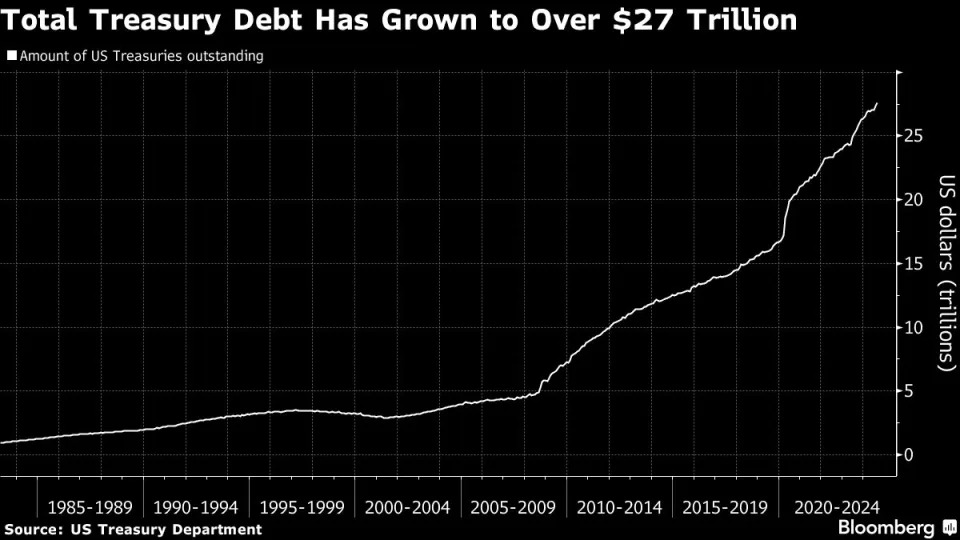(Bloomberg) -- Australia’s central bank is closely monitoring the state of the labor market as persistent tightness may signal a stronger economy, Governor Michele Bullock said, adding that policymakers aren’t “pre-committed” to any path for interest rates.
“The board is committed to being guided by the incoming data and our evolving assessment of the risks,” Bullock told a parliamentary panel in Canberra on Friday. “While the strong employment growth is good news for jobseekers, we are alert to the possibility that it is signaling a bit more strength in the economy, which could delay or derail the disinflation process.”
The governor repeatedly reminded lawmakers that the Reserve Bank’s job on inflation isn’t completed and that there’s still more work to be done. She also highlighted uncertainties to CPI including US trade policy and the status of the Australian consumer.
Bullock’s comments capped a week of hawkish RBA communications after it cut the cash rate on Tuesday for the first time in over four years to 4.1%. The pushback included a Bloomberg interview with Deputy Governor Andrew Hauser who restated Bullock’s caution over the prospects for follow up rate reductions.
Money markets have reluctantly heeded the signals. Having previously seen a small chance of four cuts in 2025, they are now fully pricing just one more easing and pared back the chance of a further reduction to about 70%. The Australian dollar is now one of the top performers among the 10 major global currencies.
Subscribe to The Bloomberg Australia Podcast on Apple, Spotify, on YouTube, or wherever you listen
Bullock, responding to questions from lawmakers on Friday, also pointed to another influence on the decision to cut this week: policymakers didn’t want to be late to join the global easing cycle.
“Arguably, we were late raising interest rates on the way up, we didn’t respond as quickly as we should have to rising inflation, and I think the board has been quite cognizant of the fact,” she said. “If we’re going to start reducing interest rates, then we need to be thinking of doing it not when we are already back in the band but as we start to get more confident we’re coming back to the band.”
Investors will now turn to the monthly inflation indicator released on Wednesday with forecasts suggesting a slight re-acceleration of prices in January. If the number is lower than the 2.7% predicted, traders are likely to again bring forward rate cut bets from their current August expectation.
“Assuming that’s the case then a May easing looks highly likely,” said Sean Keane, chief Asia Pacific strategist for JB Drax Honore. “The RBA will potentially find itself having to cut again, or risk disappointing market expectations, and tightening financial conditions in May.”
Other key data due before the RBA’s April 1 decision include retail sales, fourth-quarter gross domestic product, employment figures for February and another monthly inflation release.
As consumer prices begin to cool, labor-market tightness is coming to the fore as policymakers assess what could refuel inflation pressures in the economy. Data on Thursday showed hiring was more than double estimates in January.
On Friday, the governor highlighted the extent of spare capacity remaining in the labor market as a key uncertainty. “The answer to that will have a material bearing on the future path of inflation,” she said.
Bullock spent some time explaining the RBA’s latest forecasts which show trimmed mean inflation easing to 2.7% from mid-2025 and remaining there through mid-2027. Core CPI was 3.2% in the final three months of last year, still above the top of the 2-3% target.
She told lawmakers that while the forecasts are based on a technical assumption of three rate cuts, derived from financial market pricing, an alternate scenario in which rates were constant over the year didn’t result in CPI hitting the 2.5% target mid-point either — it would undershoot. That suggested the need to move cautiously and be increasingly data-reliant, the governor said.
“Looking over the past three years, I think we can be satisfied with the progress made so far — though our job is definitely not done,” she said. “We have not pre-committed to any particular course of action on interest rates.”
(Updates market reaction, adds further comments from Bullock.)





